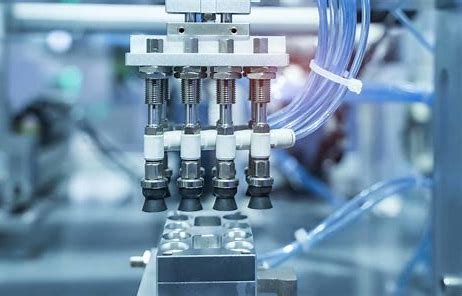GMP cell CDMO I Peace, Inc. in collaboration with universities successfully converted human dermal fibroblasts into oligodendrocyte by direct reprogramming
21 September 2022 | Wednesday | News

Image Source : Public Domain
This research was jointly conducted with Prof. Wernig at Sanford University and Prof. Rowitch at UCSF. The research was published in the online edition of an academic journal "Development" on June 24th.
Oligodendrocytes are cells that form myelin around the axons of neurons, which act as insulators surrounding the neurons and accelerate the rate at which electrical signals flow. Abnormalities in oligodendrocytes cause cerebral leukodystrophy. The production of a large number of oligodendrocytes is necessary for understanding its pathology, drug discovery, and transplantation medicine. The conventional method of inducing differentiation of human iPS cells or ES cells into oligodendrocytes is inefficient and requires a long time for differentiation induction. Therefore, it has required high cost for the transplantation medicine and the clarification of the pathology, which hinder the development for early treatment and drug discovery. In addition, transplantation treatment has accompanied with problems such as the possibility of tumor formation due to contamination of undifferentiated cells.
In this study, we have successfully transformed dermal cells into oligodendrocyte precursors without undergoing the stem cell state. Surprisingly, oligodendrocyte precursors produced directly from dermal cells finally differentiated into functional oligodendrocytes that wrapped around neurons to form myelin sheaths both in vitro and in vivo mouse brain after transplantation. Furthermore, we successfully reproduced the clinical condition in vitro using oligodendrocyte precursors cells generated from dermal cells of a patient with Pelizaeus-Merzbacher disease (PMD), a type of congenital myelination failure. PMD is a developmental disorder that occurs in children and is caused by an abnormality in the oligodendrocyte specific gene PLP1. It is known that the gene abnormality causes oligodendrocytes to die in the brain during differentiation, which prevents myelination. At present, there is no fundamental treatment for the disease, with only palliative treatment for symptoms such as movement impairment, spastic paralysis, and epilepsy. The direct reprogramming from this study successfully reproduced the pathological condition within a significantly reduced production time, which will surely accelerate drug discovery and development in the future.
The oligodendrocyte precursor cells produced in this study have been proven to engraft in the mouse brain after transplantation and wrap around neurons. Therefore, they are expected to be technically applied to transplantation regenerative medicine for other congenital myelination failure disorders and myelinopathy (multiple sclerosis, optic neuromyelitis, etc.) which effective treatments are rare.
Most Read
- The New AI Gold Rush: Western Pharma’s Billion-Dollar Bet on Chinese Biotech
- Top 25 Biotech & Biopharma Leaders in Sustainable Innovation, 2025
- China’s Biopharma Dealmaking Surges in H1 2025, Driven by Record Licensing and Oncology Focus
- Chikungunya in China: How a “Forgotten” Arbovirus Found the Perfect Storm
- How Innovation Gaps in Biopharma Raise New Safety Concerns
- Smart Implants and the Future of Musculoskeletal Injury Treatment
- How Ethical Gaps in Psychiatry Could Undermine Biopharma Progress
- The Evolving Landscape of Women’s Health Innovation in the Asia-Pacific
- Using NLP-Driven Decision Support in Emergency Health Assistance
- Taiwan Steps Into the Global Spotlight With a New Cancer Therapy
- The Role of Unique Device Identification (UDI) in Tracing Medical Device Safety
- The Importance of a Patient’s Mental Health During Clinical Trials
Bio Jobs
- The State of Biotech and Life Science Jobs in Asia Pacific – 2025
- Avantor’s New CEO Ligner Aims to Unlock Global Potential and Deliver Shareholder Value
- AstraZeneca Commits $50 Billion to U.S. Expansion by 2030 in Biggest-Ever Global Investment
- Thermo Fisher, SAMRC, and South Africa’s Department of Science and Innovation Launch CATIR to Nurture Next-Gen Scientists
- Cube Biotech Appoints Former Sartorius CEO Dr. Joachim Kreuzburg to Board of Directors
- FDA’s AI Transition Marks a Turning Point in Drug Review: Industry Faces Pressure to Adapt Amid 20% Workforce Cut
- WuXi XDC Completes Mechanical Build of Singapore Bioconjugate Manufacturing Hub
News
Editor Picks











